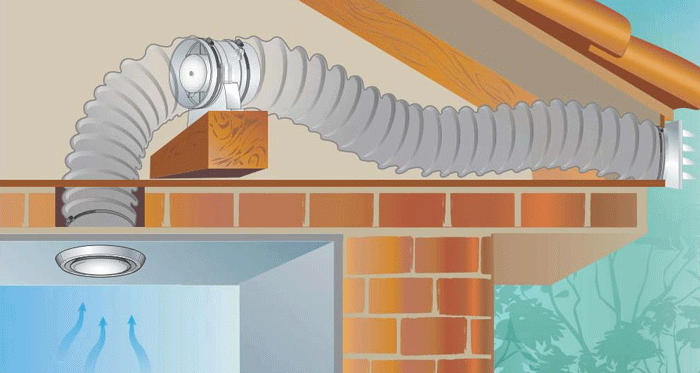The bathroom fans are the essential components of a healthy and energy-efficient washroom. They also aid in the removal of excess moisture and mould that accumulates in the washroom after hot showers. Many bathrooms are in rooms with no windows. Many towns and municipalities require exhaust fans to be installed in windowless restrooms.
Humidity conditions in houses can rise owing to a variety of circumstances. The primary culprits include humidifiers, water radiators, heaters, cooking techniques, and hot showers in poorly ventilated shower stalls. A bathroom fan, then, is essential in maintaining optimal humidity levels throughout your home, removing excess moisture and mold, and mildew, and protecting the indoor air quality within your home’s walls.
What are Bathroom Fans For: The Complete Guide
Any bathroom that lacks sufficient ventilation invites difficulties you may have already encountered. Below are some of the bathroom exhaust fans you need to consider when acquiring one.
1. Ceiling Exhaust Fans
As the name suggests, a ceiling exhaust fan is a ceiling-mounted exhaust fan. Air can be ducted outside or discharged into the roof cavities with the help of these fans.
Exhausting a room with a ceiling fan is one of the most popular methods. When selecting a ceiling exhaust fan, keep in mind the size of the room and the purpose for which it will be used. Third is whether or not the fan needs to be connected to ductwork, which is essential if you’re upgrading existing bathroom fans.
In supermarkets, you’ll find a wide variety of ceiling-mounted ventilation fans, including deductible and non-deductible models. When shopping for a ceiling fan for your home, keep these guidelines in mind:
Is this a new fan or a replacement for an old fan? To replace an old fan, you’ll need to dismantle it and measure the hole. The hole size is less critical for a new installation because you will have to make a hole in the drywall. When ducting a fan, keep the duct run as short as feasible. If your roof area is adequately aired, you may prefer to vent your ceiling exhaust fan into the cavity.
What about in the cubicle of a shower? Ceiling-mounted exhaust fans should not be installed near your shower or even in the shower stalls. First, choosing a fan with an acceptable IP rating is a safety consideration. It is also possible for condensation to collect on and drip from the exhaust fan grille if it is located directly above a source of warm water. We recommend an inline fan or a roof-mounted fan if the shower cubicle has limited room and a fan is needed.

2. Wall Exhaust Fans
A wall exhaust fan is beneficial in locations with minimal ceiling/roof area. There are wall exhaust fans of various types, including those with the fan motor on the inside of the room and those with the fan motor on the outside of the wall. The product line comprises a wide range of exhaust capabilities, from primary toilet performance to huge regions requiring a high capacity exhaust fan.
In most cases, a wall fan is made up of motor components and ducting or tubing that leads to an exterior exhaust. Whenever you need to replace an outdated exhaust fan, you must first remove the wall fan and measure the size of the hole that has been created. It is also necessary to determine the depth of the wall.
When installing a new fan, make sure that the fan’s depth is appropriate for the depth of the wall; otherwise, you will have to build a correct hole in the wall to fit the fan. You should keep in mind that, depending on the wall type, it is frequently simpler to create a larger hole rather than filling in a smaller one if you can’t locate one that is the exact size you need.

3. Inline Exhaust Fans
An inline exhaust fan is frequently put directly into the ceiling cavity, in-between lengths of ductwork. Inline fans are common in situations with insufficient ventilation or roof space for a ceiling exhaust fan. Using an inline exhaust fan within the roof cavity can typically reduce noise.
These inline fans are suitable for residential, commercial, and industrial settings. The inline fans have motors that can be classified into three types:
Axial motors are designed to convey large volumes of air at extremely low pressure, and they employ a single propeller to do this. Short duct runs, few bends, and no branches make them the optimum choice for installations with short duct runs, few bends, and no branches.
A centrifugal motor is particularly well suited to applications requiring longer lengths of ducting and ducting, including bends and branches. They are responsible for moving a lot of air against pressure. This means you will maintain the fan’s capacity exceptionally well even when the duct run is long.
Maxflow motors combine axial and centrifugal characteristics, with centrifugal features starting at 150mm and axial elements below this size starting at 50mm. You can use longer lengths of ducting with bends and branches to get the desired effect.

Each inline fanlisting includes a pressure curve for your convenience. There is also all other pertinent information, such as specifications and dimensions.






